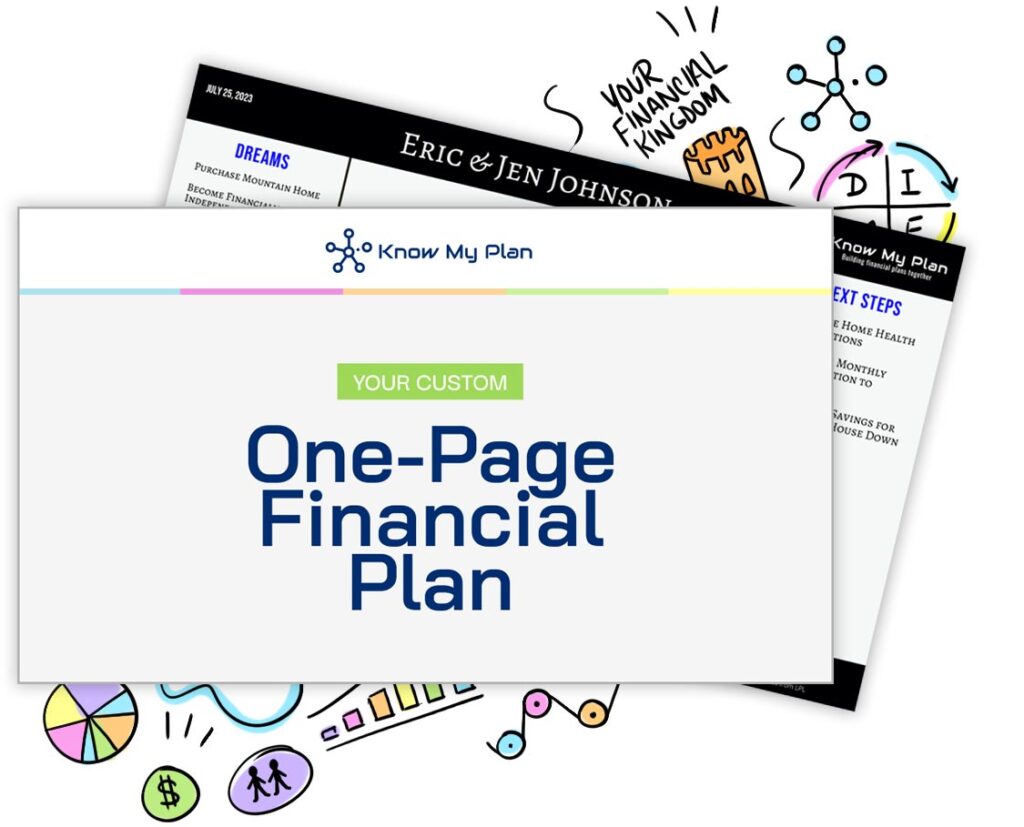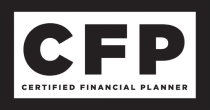
To end the year on a high note, we created a Financial Advent Calendar filled with 25 Financial Planning gifts to enjoy this Advent season with friends and family.
Day 1: Build A G.RE.A.T. Portfolio
Do you know how to build a G.R.E.A.T portfolio? Use our acronym as a framework to get started.
☐ Growth Opportunities – does the portfolio have a realistic expectation to grow at a rate higher and hopefully substantially higher than inflation?
☐ Real Names – do you know what you own and why you own it? I believe that truly understanding how you are investing is far superior to some black-box investment that lacks transparency.
☐ Expenses – expenses must be fair & reasonable for the nature of the investment that you are choosing.
☐ Access – how easy is it to access your money when needed? Some investments are nearly impossible to access your money.
☐ Tax Efficiency – are your investments located in the right place? Can you access your money in a tax-efficient manner?
Remember, it is not how much you make but how much you keep!
Day 2: Keep Your Income Greater Than Expenses
The bedrock of financial planning is ensuring that your income exceeds your expenses.
Day 3: Build An Emergency Fund Equal To 6 Months Of Living Expenses
Build an emergency fund equal to 6 months of living expenses. For example, if you spend $8,000 per month. Your goal would be to have an emergency fund of $48,000. Your emergency fund should be in a cash equivalent (cash, savings, or money market). These are not funds that should be “invested.”
Day 4: Plan For 3 Years Of Major Purchases
In addition to setting aside cash for emergency funds, make sure you set aside cash for any major purchases planned for the next three years.
While you might lose purchasing power to inflation, historically, this can be less risky than taking risks in fixed-income or equity markets.
Day 5: Asset Location Is More Important Than Asset Allocation
While Asset Location and Asset Allocation are important, Asset Location is greatly overlooked in financial planning. This is important when you have money in multiple buckets (taxable, tax-deferred, and tax-free).
It might be prudent to have your high-growth potential investments in your tax-free bucket.
Income-producing investments might be best suited for tax-deferred or tax-free.
Day 6: Save At Least 10% of Pre-Tax Earnings
No matter where you are on your financial planning journey, save at least 10% of your pre-tax earnings. Annually, try to raise your contribution rate until you are financially independent.
Day 7: Embrace All Things Roth
There are five ways to Roth. Understand which ones apply to you and your family.
☐ Roth 401k
☐ After Tax 401k – then direct rollover to a Roth IRA
☐ Roth IRA
☐ Roth Conversions – convert Traditional IRAs to Roth IRAs
☐ Backdoor Roth – contributing to a non-deductible IRA and then converting to a Roth IRA
*Traditional IRA account owners have considerations to make before performing a Roth IRA conversion. These primarily include income tax consequences on the converted amount in the year of conversion.
Day 8: Utilize A Health Savings Account (“HSA”)
The HSA is arguably the most tax-efficient investment option that exists.
☐ Funds are contributed pre-tax.
☐ Any earnings are tax-deferred.
☐ Funds can be distributed tax-free.
NOTE: Make sure you have your funds invested, shred the debit card, and use these funds for health care expenses in retirement.
Day 9: Save Inside Of A Taxable Account
Do not forget to save inside of a taxable account. Spread your money into all three major savings “buckets.”
A taxable account helps give you access to money. Make sure you watch out for income-producing assets and actively managed funds.
While a taxable account can help access money, you don’t want to leak too much of your return to your 1099 income taxation.
Day 10: Don’t Forget The Line Of Credit
Lines of credit are wonderful because they give you access to money. We often think of having a line of credit on our home.
However, remember to have a line of credit on your taxable brokerage/ managed account. You can potentially collateralize your taxable account.
In many cases, borrowing money is more advantageous than selling an investment and triggering a tax bill.
Risks to consider: Margin calls and/or liquidation of securities, Amplified losses if the securities in your account decline in value, Losses greater than the original investment are possible, and Interest rates may rise, increasing the cost of your loan.
Day 11: Evaluate Permanent Insurance
Permanent insurance can be extremely controversial. Some areas to consider using permanent life insurance:
☐ Leaving a legacy – a 2nd-to-die life insurance policy can be an amazing way to leave a federal and state tax-free death benefit to loved ones.
It is not designed to build cash value but to leave the maximum death benefit for the premium paid.
☐ Funding Future Health Care Costs – hybrid life insurance policies with long-term care or chronic illness riders have some benefits over purchasing a traditional long-term care policy.
Hybrid policies can be established with a level premium and non-reducing benefits. The downside to traditional long-term care can be rising premiums or reduced benefits over time.
☐ Cash Value Accumulation – funded and designed correctly, this can be a way to build cash value with returns non-correlated to the rest of your portfolio. Funds can potentially be borrowed without triggering any tax obligations. This can be a great way to access cash in a bear market. After all, you never want to sell your stocks into weakness.
Riders are additional guarantee options for annuity or life insurance contract holders. While some riders are part of an existing contract, others may carry additional fees, charges, and restrictions, and the policyholder should review their contract carefully before purchasing. Insurance guarantees are based on the claims-paying ability of the issuing insurance company. Loans from a life insurance policy may be subject to penalties and fees and, along with any accrued loan interest, will reduce the policy’s account value and death benefit. A policy loan could result in tax consequences if the policy lapses or is surrendered while a loan is outstanding.
Day 12: Keep Pre-Tax Investments Under $730,000
Pre-tax investment dollars are a wonderful part of a diversified portfolio. I encourage you to try to keep your balances under $630,000. You should consider converting pre-tax retirement accounts once you reach $730,000 to Roth IRAs for tax diversification or putting additional dollars into other “buckets.”
Why $730,000? A 4% distribution from $630,000 is $25,200. The standard deduction for 2024 happens to be $29,200 for those married filing jointly.
The standard deduction could offset the distribution of $95,200.
It’s not what you make but what you keep.
Roth IRA conversion considerations primarily include income tax consequences on the converted amount in the year of conversion.
Day 13: Calculate Life Insurance Needs
Step 1: Add up outstanding debts
Step 2: Add up outstanding unfunded liabilities (ex: college)
Step 3: Add Steps 1 and 2 together
Step 4: Calculate how much money you need to maintain your lifestyle if you are debt-free.
Step 5: Calculate the Step 4 number x 12
Step 6: Divide the answer in Step 5 by .04
Step 7: Add Step 3 answer + Step 6 answer = total assets needed if I died today
Step 8: Step 7 – liquid net worth (i.e., what you have already saved) = insurable need
For example:
Step 1: $550k mortgage
Step 2: $250k lump sum needed for college for three kids
Step 3: $800,000
Step 4: $9k/month
Step 5: $108,000/year
Step 6: $2,700,000
Step 7: $3,500,000
Step 8: $3,500,000 – $500,000 savings = $3,000,000 insurable need
Day 14: Disability Insurance: Protect Your Paycheck
Most people’s largest asset is not their house or their IRA but their ability to earn a paycheck.
What happens if you are sick or injured and cannot earn your paycheck?
This is where disability insurance is incredibly important to you and your family. You do not have to be in a major car accident to go on a disability claim. Two of the leading causes of claims are muscular-skeletal (back pain) and cancer.
Make sure you protect your paycheck.
Day 15: Evaluate How You’ll Pay For Long-Term Care
How would you pay for it if you had to go into a long-term care facility today?
Maybe you do not like paying premiums. I get it. Who does?
However, better solutions exist today than in the past. Long-term care is no longer a “use it or lose it” endeavor.
In addition, there can be great leverage in transferring the risk to an insurance company compared to simply paying for long-term care out of pocket.
You owe it to yourself and your family to revisit the long-term care conversation.
Day 16: Get Estate Planning Documents In Order
A great way to show your family that you love them is by having your estate planning documents in order. This can hopefully keep the holidays peaceful for years after you are gone!
Key Estate Planning Documents:
☐ Will
☐ Trust
☐ Power of Attorney
☐ Medical Directives
Day 17: Save Money In Different Buckets
You have probably heard don’t put all your eggs in one basket before, right? It’s great advice! Make sure to have at least three different “buckets” of money.
☐ Tax Free – Example: Roth IRA, HSA, Cash Value Life Insurance
☐ Tax Deferred – IRA, 401k
☐ Taxable – Brokerage/Managed accounts
Day 18: Have 5 Years of Portfolio Income Needs In “Fixed Income” When Entering Retirement
Before retiring, figure out how much money you need from your portfolio to supplement any guaranteed income sources you might have (Social Security, Pension, or Annuity).
For example, let us say that you need $8k monthly in retirement and will receive $5k from “guaranteed” sources. This leaves a gap of $3k per month. Set aside five years’ worth of income needs in “fixed income.” In our example, this would be $180,000 ($3k x 60 months).
Do not forget to invest the rest for “long-term growth and appreciation potential.”
Day 19: Leave A Life Insurance Legacy
If you want to leave your children or other beneficiaries a legacy, leave life insurance. Life insurance is the most efficient way to pass money from one person to the next.
Spend down your qualified investment dollars. The new SECURE Act states that non-spouse beneficiaries must liquidate IRA/401k dollars within ten years.
These funds can no longer be stretched for the lifetime of beneficiaries.
Go ahead and spend those IRA dollars!
Day 20: Embrace the Debt Snowball
I encourage everything to have a game plan to get debt-free or at least have no debt outside your mortgage.
Dave Ramsey’s famous Debt Snowball approach is the best way to do it.
Step 1: Make a list of all your debts, from the smallest outstanding amount to the largest outstanding amount.
Step 2: Make minimum payments to all lenders except for your smallest obligation. Put the most money on the smallest obligation until it is paid off.
Step 3: Repeat Step 2 until debt-free.
Day 21: Limit Company Stock To 10% Of Liquid Networth
High earners can easily become over-concentrated to their employer’s stock without much effort. You might receive Restricted Stock Units or participate in the Employee Stock Purchase Plan.
Ensure you do not have more than 10% of your liquid net worth allocated to your employer’s stock. After all, you already have 100% of your income dependent on your employer.
Day 22: Invest In Your Health
To thrive, you must invest in your health before it becomes an expense.
This is an area to splurge. Eat healthy food. Get a personal trainer. Make time to get your daily exercise in. We only get one body. Make the most of it. This will greatly lead to a higher quality of life and to being able to do more with our time.
Day 23: Invest In Your Earning Potential
One of the greatest investments you can make is in yourself. Do not be afraid to re-invest in your business. Take the leap of faith and bet on yourself if you have a great business idea. Continue to be a lifelong learner.
Day 24: Invest In Saving Time
This one hits close to home for me. Calculate what your time is worth. Take your total compensation divided by hours worked. For example, if you make $400,000 annually and work 50 weeks yearly, your time is worth $200,000 per hour.
Stop spending your “free” time doing activities/chores that could be outsourced may not be optimal. For example, I have always mowed my yard. I could easily outsource these two weekly hours for $40 per hour. If I took that two hours, I could work for 24 minutes and produce $80 worth of value. That would free up 96 minutes to invest in faith, family, and relationships.
Outsourcing does not mean you cannot perform the task well. It just means there are better uses of the most valuable resource…time.
Think of the value you could unlock if you put a valuation on your time.
Day 25: Invest In Time With Family
There is no investment greater than spending time with family and the ones you love. Christmas is my favorite day of the year. I am so thankful for the beautiful memories that I had growing up. Now, I am so thankful for the time I spend as a parent and a husband.
I miss the people who have passed from this life but carry incredible memories of my grandparents and other loved ones.
I hope that my children have such fond memories of their childhood.
Wishing you a wonderful Holiday season!
Cheers,
Nic
The opinions voiced in this material are for general information only and are not intended to provide specific advice or recommendations for any individual. This information is also not intended to be a substitute for individualized legal or advice All investing involves risk including loss of principal. No strategy assures success or protects against loss. Roth IRA Withdrawals of earnings prior to age 59 ½ or prior to the account being opened for 5 years, whichever is later, may result in a 10% IRS penalty tax.







